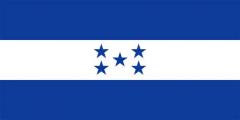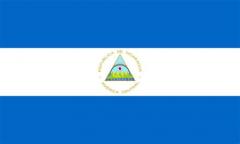Wednesday, in a meeting with Guatemalan President Jimmy Morales, U.S. Homeland Security chief John Kelly appeared to contradict the prevalent understanding of Donald Trump’s recent deportation directives, assuring the Guatemalans that rather than deporting people en masse, the administration would simply step up deportations of people with criminal records.
Deporting undocumented people who commit crimes in the United States is the kind of policy that tends to get wide bipartisan support, even from people who are relatively sympathetic to immigration reform. The Obama administration deported such people at a record clip. But while the optics are certainly better than deporting hard-working families who are law-abiding aside from their immigration status, deporting “bad hombres,” as Trump memorably put it, is not without consequences. In fact, past rounds of this kind of deportation are in part driving much of the migration into the U.S. today.
Take the transnational mara criminal gangs, notably MS-18 and Mara Salvatrucha, or MS-13, which originated in Los Angeles and grew during the 1980s as a result of an influx of Salvadoran and Guatemalan refugees. Many of those refugees had come to the United States as children, fleeing their home countries’ long-running civil wars, in which the U.S. provided aid to anti-leftist forces. After the Rodney King riots of the early 1990s, California passed tough anti-gang laws. Congress also passed legislation making it easier to deport illegal immigrants with criminal records around that time. Between 1998 and 2005, the United States deported nearly 46,000 convicts to Central America, according to a 2009 report by the Small Arms Survey. The report describes what happened next:
Three countries—El Salvador, Guatemala, and Honduras—received more than 90 per cent of the deportations from the United States (USAID, 2006, pp. 18–19). Many of these deportees were members of the 18th Street and Salvatrucha gangs who had arrived in the United States as toddlers but had never secured legal residency or citizenship; they had joined the gangs as a way to feel included in a receiving country that often actively impeded their integration. On being sent back to countries of origin that they barely knew, deportees reproduced the structures and behaviour patterns that had provided them with support and security in the United States. They swiftly founded local clikas, or chapters, of their gang in their communities of origin; in turn, these clikas rapidly attracted local youths and either supplanted or absorbed pandillas [local gangs].
Driven largely by gang violence, Honduras has the world’s highest murder rate, El Salvador is second, and Guatemala is ninth. And the problem doesn’t stay in Central America. As Matthew Quirk wrote for the Atlantic in 2008, “Salvadoran police report that 90 percent of deported gang members return to the U.S. After several spins through the deportation-and-return cycle, MS-13 members now control many of the ‘coyote’ services that bring aliens up from Central America.”
They also create the violence that causes their law-abiding neighbors to flee. Unauthorized immigration from Central America has been steadily growing in recent years as immigration from Mexico has declined, including thousands of unaccompanied minors fleeing gang violence and poverty.
The U.S. contributed and prolonged Central America’s violence during the Cold War by arming and funding anti-communist governments and rebels, including those involved in vicious human rights abuses, prompting Central Americans to flee to the United States. Then in the 1990s, the U.S. deported criminals back to these countries, while simultaneously supporting government crackdowns on gangs and drug smugglers, essentially feeding both sides of increasingly deadly conflicts and driving a new round of migration.
Trump may believe that with deportations and a big beautiful wall he can cut the United States off from Central America’s problems, but he’s more likely just kicking off the next phase of the deadly cycle.




